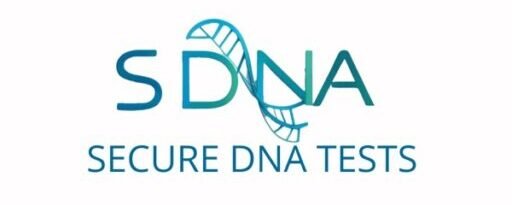DNA DEFINITIONS
DNA Glossary Terms
Below are definitions of technical terms used of word commonly used when describing the DNA testing process.

TERMS
DEFINITIONS
AABB
The American Association of Blood Banks sets guidelines for blood transfusion services and DNA testing for identity confirmation.
Affidavit
Evidence acceptable in a court of law.
Allele
A version of a gene found at the same location on a chromosome. Alleles can slightly differ in their DNA sequence.
Alleged Father
A man claimed to be the biological father of a child, whose paternity is not legally established.
Autosome
Any chromosome that is not a sex chromosome. Humans have 22 pairs of autosomes and one pair of sex chromosomes.
Avuncular
A DNA test that determines if someone is the biological aunt or uncle of a child by comparing their DNA with that of the child.
Biological Child
An offspring genetically related to both parents, inheriting DNA and traits through reproduction.
Biological Father
The male who contributes half of the genetic material to an offspring through fertilization.
Buccal Cheek Swab
A method for collecting DNA from cells inside a person’s cheek, often used for genetic testing.
Chain of Custody
A process that documents the history of evidence to ensure its integrity from collection to court presentation.
Child Support
Financial support paid by one parent to another for raising their child or children.
Chromosome
Thread-like structures made of DNA and protein located in cell nuclei, passed from parents to offspring during reproduction.
Court Admissible
Proof or evidence that can be accepted in court.
Collection Site
A designated place where DNA samples are collected for testing.
CRBA
A Consular Report of a Birth Abroad is issued by a U.S. embassy to prove U.S. citizenship for a child born abroad to U.S. citizen parents.
Custodial Parent
The parent with whom a child lives most of the time after separation or divorce.
DNA Extraction
The process of obtaining pure DNA from a sample, isolating it from other components like proteins and lipids.
DNA Fingerprinting
A technique that identifies an individual’s unique genetic makeup by comparing variable regions of DNA.
DNA Profile
A unique pattern of DNA sequences used to identify an individual.
Dizygotic Twin
Fraternal twins born from two separately fertilized eggs, each by different sperm cells.
Exclusion
Determining that an individual does not belong to a specific family relationship based on DNA evidence.
Epigenetic Modification
Changes in gene function or expression without altering the DNA sequence, influenced by environmental factors.
Fraternal Twin
Twins resulting from two separately fertilized eggs, sharing the same birth date but not genetically identical.
Gene
A unit of heredity transferred from parent to offspring, determining traits.
Grandparent
The parent of one’s father or mother; a person’s grandmother or grandfather.
HLA
Human Leukocyte Antigens help the immune system identify self and non-self entities.
Immigrant Visa
A visa that allows individuals to enter and reside in a foreign country with plans to become permanent residents or citizens.
Inclusion
Determining that a person is the biological parent or relative of another person in DNA testing.
Kinship
The state of being related by blood or family ties.
Loci
Specific positions on chromosomes where genes or genetic markers are located.
Maternal
Relating to a mother; inherited from one’s mother.
Matrilineal
Tracing descent through the maternal line.
Mitochondrial DNA
Circular DNA found inside mitochondria, passed down from mothers to their offspring.
Molecule
The smallest particle of a substance that retains its chemical properties, made up of one or more atoms.
NYSDOH
The NYSDOH stands for the New York State Department of Health. It is a governmental agency responsible for protecting public health and ensuring the provision of healthcare services in New York State. The department oversees various health-related programs, including disease prevention, public health education, and healthcare regulation. It also conducts research and provides guidance on health policies and regulations to improve the overall health of the state’s residents.
Non-custodial
Refers to a parent who does not have primary custody of a child.
Paternity
The legal and biological relationship between a father and his child.
Paternity Index (PI)
A statistical measure comparing the likelihood that an alleged father contributed an allele to a child versus a random man in the same population.
PCR
Polymerase Chain Reaction is a technique used to amplify specific segments of DNA through temperature changes and enzyme reactions.
Random Man
A statistical measure comparing the likelihood that an alleged father contributed an allele to a child versus a randomly selected unrelated man.
Relative
A person connected by blood or marriage to another person.
Request For Evidence (RFE)
An office action issued by USCIS when insufficient evidence is submitted during the visa application process.
RFLP
Restriction Fragment Length Polymorphism is a technique analyzing genetic variations by cutting DNA into fragments and separating them by size through gel electrophoresis.
Self Collection
The process of an individual collecting their biological samples, such as DNA via buccal swab, for genetic testing.
Sex Chromosome
A type of chromosome involved in sex determination; in humans, these are the X and Y chromosomes.
Sibling
A brother or sister; someone who shares at least one parent with another person.
STR (Short Tandem Repeat)
Repeated sequences of DNA bases used in testing because they vary widely among individuals, aiding identification and relationship testing.
Zygosity
The degree of similarity of alleles for a trait in an organism; monozygotic twins have identical alleles while dizygotic twins do not.
Paternal Services:
Home Paternity Test
Legal Paternity Test
Prenatal Paternity Test
Parentage DNA Testing
DNA Testing Services:
Sibling DNA Test
Grandparent DNA Test
Avuncular DNA Test
Maternity DNA Test
Forensic DNA Services:
Infidelity DNA Test
DNA Testing w/Hair
DNA Testing w/Toothbrush
